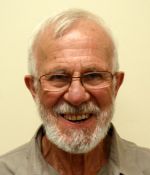The Michael Aitken Collection of Early Ophthalmic Books

The Michael Aitken Collection comprises over 170 books of significance to the development of ophthalmology and optometry since the 17th C. It includes over 50 books donated by Michael Aitken, who has been honorary archivist of the Kett Museum since 1970.
The 2-volume book by Robert Smith on optics published in 1738 was donated by his fellow honorary archivist, the late Brian Flynn.
Additions to the Aitken Collection since January 2015
Handbuch der Physiologischen Optik by Hermann von Helmholtz First Edition (1867) Cat no. 2924
The Sheard volume. Selected writings of Charles Sheard. (1957) Cat no. 2902
Physiological optics by Charles Sheard (1918) Cat no. 2901
The ophthalmoscope, its theory and practical uses by Charles Vilas (1882) Cat. no. 2772
On conical cornea by William Cooper (1850) Cat. no. 2715
Textbook of ophthalmoscopy. Part 1 by Edward Loring (1893) Cat. no. 2648. Part 11 is Cat. no. 292
Contact lens technique: a concise and comprehensive textbook for practitioners by Lester Beacher 1st and 2nd editions (1941). This is the first contact lens textbook.Cat. nos. 2613, 2635
Squint: its causes, pathology and treatment by Claud Worth (1903). This is the first English language book on orthoptics. Cat. no. 2514
Browse the whole collection in the archive online catalogue by choosing the search terms "Book" and then “Significant book (Aitken collection)” in the sub-category field.
Collection highlights
- BARROW, Isaaco. Lectiones opticae & geometricae in quibus phaenomenon opticorum. 1674. Barrow (1630-1677) was Lucasian Professor of Mathematics at Cambridge in 1663 and was tutor to Isaac Newton. It is said that Newton actually prepared this book based on his professor’s lecture notes.
- NEWTON, Isaaco. Optice: sive de reflexionibus, refractionibus, inflexionibus & coloribus Lucis libre tres 1706
- SMITH, Robert. A compleat system of opticks in four books viz a popular, a mathematical, a mechanical, and a philosophical treatise, to which are added remarks upon the whole. 1738
- AYSCOUGH James. A short account of the eye and nature of vision. Chiefly designed to illustrate the use and advantage of spectacles. 1752. Ayscough (d 1759) was a London optician who invented spectacles with double hinged sides and made the first sunglasses. This may be the earliest English language optometry text by an optican (as optometrists were called then).
- PORTERFIELD, William. Treatise on the eye: The manner and phenomena of vision 1759
- ADAMS, George. AN ESSAY ON VISION briefly explaining the fabric of the eye and the nature of vision. 1792.
- STEVENSON, John. On the morbid sensibility of the eye, commonly called weakness of sight 1811
- (BEER George). Art of preserving the sight unimpaired to an extreme old age: and of re-establishing and strengthening it when it becomes weak. 1824.
- KITCHINER, William. The economy of the eyes: precepts for the improvement and preservation of the sight. Plain rules which will enable all to judge exactly when, and what spectacles are best calculated for their eyes. 1824
- ALEXANDER Alexander. A treatise on the nature of vision. 1833. Alexander Alexander was a practical optician to Royalty This is one of the early books on the eye and its defects written by an optician.
- CURTIS John. A treatise on the physiology and diseases of the eye containing a new mode of curing cataract without an operation 1835.
 MACKENZIE William. A practical treatise on the diseases of the eye 1854. Mackenzie (1791-1869) (pictured) was surgeon oculist to Queen Victoria in Scotland. This book represents ophthalmological knowledge in the first half of the 19th C before the writings of Helmholtz and Donders.
MACKENZIE William. A practical treatise on the diseases of the eye 1854. Mackenzie (1791-1869) (pictured) was surgeon oculist to Queen Victoria in Scotland. This book represents ophthalmological knowledge in the first half of the 19th C before the writings of Helmholtz and Donders.
Collection policy
The collection is added to regularly as opportunities to purchase books of historical significance arise
Where is the collection held?
The collection is held in the Nathan Library on the glass fronted shelves on the south wall
Accessing the collection
Books in the collection can be browsed in the Library by arrangement with the Librarian. The books are not loaned other than by special arrangement for research purposes.

